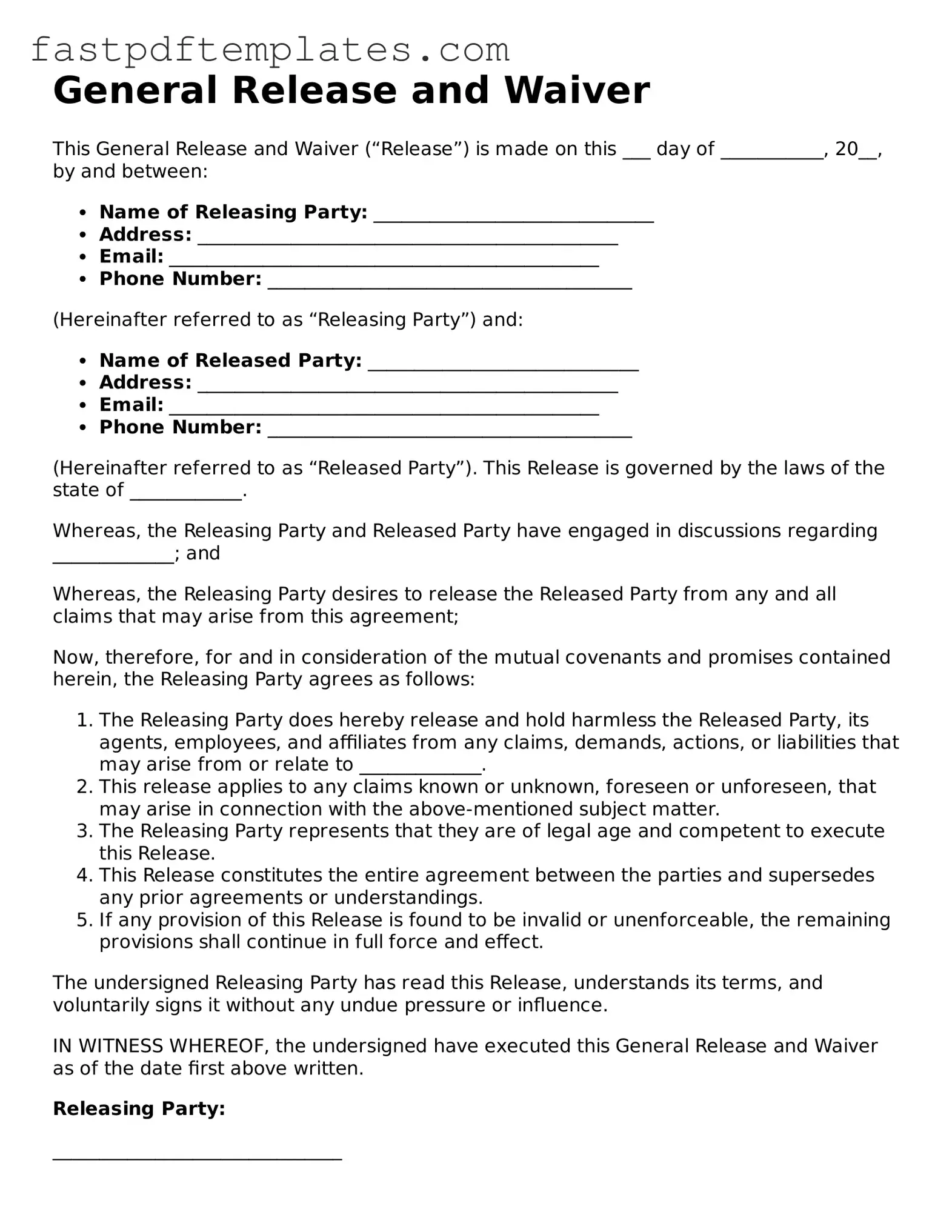General Release and Waiver
This General Release and Waiver (“Release”) is made on this ___ day of ___________, 20__, by and between:
- Name of Releasing Party: ______________________________
- Address: _____________________________________________
- Email: ______________________________________________
- Phone Number: _______________________________________
(Hereinafter referred to as “Releasing Party”) and:
- Name of Released Party: _____________________________
- Address: _____________________________________________
- Email: ______________________________________________
- Phone Number: _______________________________________
(Hereinafter referred to as “Released Party”). This Release is governed by the laws of the state of ____________.
Whereas, the Releasing Party and Released Party have engaged in discussions regarding _____________; and
Whereas, the Releasing Party desires to release the Released Party from any and all claims that may arise from this agreement;
Now, therefore, for and in consideration of the mutual covenants and promises contained herein, the Releasing Party agrees as follows:
- The Releasing Party does hereby release and hold harmless the Released Party, its agents, employees, and affiliates from any claims, demands, actions, or liabilities that may arise from or relate to _____________.
- This release applies to any claims known or unknown, foreseen or unforeseen, that may arise in connection with the above-mentioned subject matter.
- The Releasing Party represents that they are of legal age and competent to execute this Release.
- This Release constitutes the entire agreement between the parties and supersedes any prior agreements or understandings.
- If any provision of this Release is found to be invalid or unenforceable, the remaining provisions shall continue in full force and effect.
The undersigned Releasing Party has read this Release, understands its terms, and voluntarily signs it without any undue pressure or influence.
IN WITNESS WHEREOF, the undersigned have executed this General Release and Waiver as of the date first above written.
Releasing Party:
_______________________________
Signature
_______________________________
Date
Released Party:
_______________________________
Signature
_______________________________
Date
